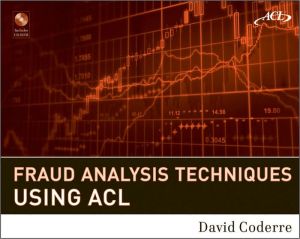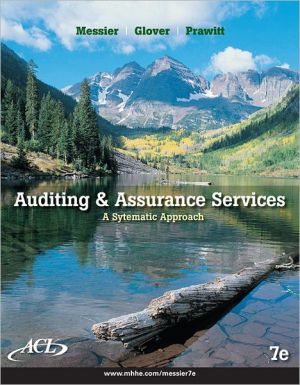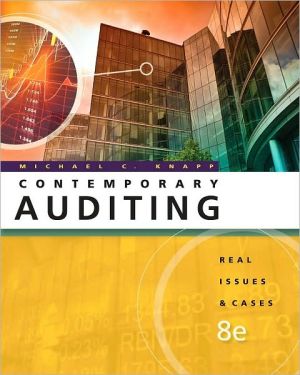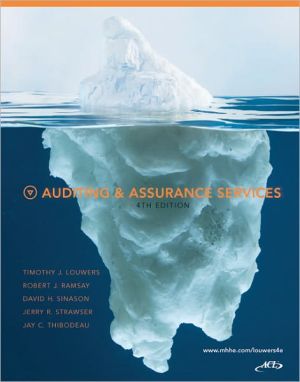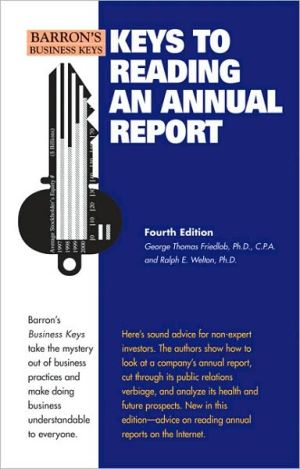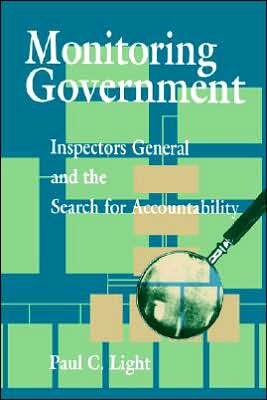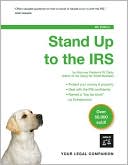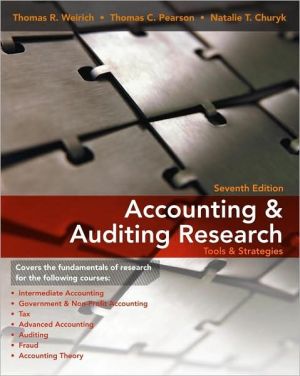Fraud Analysis Techniques Using ACL
"When people ask me what they can do to better utilize ACL, I tell them, 'Take an instructor lead course, participate in the ACL Forum, and study (not read, study) David Coderre's Fraud Analysis Techniques Using ACL.' I studied this book, and would not be where I am today without it. Even without the anti-fraud material, the book is worth the investment as a tool to learning ACL!"\ —Porter Broyles, President and founder of the Texas ACL User Group, Keynote Speaker at ACL's 2009 San Francisco...
Search in google:
Praise for Fraud Analysis Techniques Using ACL "When people ask me what they can do to better utilize ACL, I tell them, 'Take an instructor lead course, participate in the ACL Forum, and study (not read, study) David Coderre's Fraud Analysis Techniques Using ACL.' I studied this book, and would not be where I am today without it. Even without the anti-fraud material, the book is worth the investment as a tool to learning ACL!"—Porter Broyles, President and¿founder of the Texas ACL User Group, Keynote Speaker at ACL's 2009 San Francisco Conference, Official ACL Super User "For individuals interested in learning about fraud analysis techniques or the art of ACL scripting, this book is a must-read. For those individuals interested in learning both, this book is a treasure."—Jim Hess, Principal, Hess Group, LLC Your very own ACL Fraud Toolkit—at your fingertips Fraud Analysis Techniques Using ACL offers auditors and investigators: Authoritative guidance from David Coderre, renowned expert on the use of computer-assisted audit tools and techniques in fraud detection A CD-ROM containing an educational version of ACL from the world leader in fraud detection software An accompanying CD-ROM containing a thorough Fraud Toolkit with two sets of customizable scripts to serve your specific audit needs Case studies and sample data files that you can use to try out the tests Step-by-step instructions on how to run the tests A self-study course on ACL script development with exercises, data files, and suggested answers Filled with screen shots, flow charts, example data files, and descriptive commentary highlighting and explaining each step, as well as case studies offering real-world examples of how the scripts can be used to search for fraud, Fraud Analysis Techniques Using ACL is the only toolkit you will need to harness the power of ACL to spot fraud.
Preface. About This Toolkit. Who Should Use This Toolkit? What Is Included in This Toolkit? System Requirements. How to Use This Toolkit. Install the Fraud Toolkit Application. How This Book Is Structured. Script Code Conventions. Flowcharts. Modifications/Updates. Contacting the Author. Acknowledgments. Introduction. Using Data Analysis toDetect Fraud. Fraud: Risks and Costs. Why Do People Commit Fraud? Why Use Data Analysis Software? Identifying Fraud. Proactive Fraud Investigation. Benefits of Data Analysis with CAATTs. About Scripts. What Is a Script? Benefits of Scripts. Preparing Scripts for Use. Copying Scripts. Copying Table Layouts. Working with Scripts. Launching the Fraud Toolkit Application. Running the Scripts. Filtering. Customizing Scripts. Customizing: An Example. Creating Your Own Fraud Application. Further Reading. Chapter 1: Start and Menu. Launching the Fraud Toolkit Tests. Starting the Fraud Toolkit Application. Placement of Start and Fraud Menu Scripts. How the Scripts Work. Start. Fraud Menu. Log Files. Exiting a Script. Working without the Fraud Menu. Chapter 2: Completeness and Integrity. Checking for Blanks and Data Type Mismatches. Running Completeness and Integrity. How the Scripts Work. Carriage Returns. Understanding the Verify Command. Understanding the Group Command. Deleting Temporary Variables, Fields, and Files. Variables for Complete. Review and Analysis. Case Study: General Ledger Accounts Unaccounted For. Chapter 3: Cross-Tabulation. Organizing Your Data to Find Trends. Running Cross-Tabulation. Benefits of Cross-Tabulation. How the Scripts Work. Challenges of Cross-Tabulation. X-Axis Labels. Workspaces. Deleting Temporary Variables, Fields, and Files. Variables for Cross Tabs. Review and Analysis. Case Study: Not Enough Clients. Case Study: Calling Cards. Chapter 4: Duplicates. Finding Higher-Risk Items. Payroll. Accounts Payable. Running Duplicates. How the Scripts Work. The Role of Subscripts. Case Study: Duplicate Payments. Dup Dialog Script. If Statements. Dup Multiple Keys1. Macro Substitution. KeyChange. Define Field. LENGTH() andHEX(). Deleting Temporary Variables, Fields, and Files. Review and Analysis. Checking for Duplicates. Payroll Example. Accounts Payable Example. Chapter 5: Gaps. Identifying Transactions Missing froma Sequence. Running Gaps. How the Scripts Work. Deleting Temporary Variables, Fields, and Files. Review and Analysis. Case Study: Free Calls. Chapter 6: Data Profile. Establishing Normal Values and Investigating Exceptions. Running Data Profile. How the Scripts Work. Flow of Data in Data Profile. Data Profile Test Parameters. Deleting Temporary Variables, Fields, and Files. Review and Analysis. Statistics. Stratify. Round Amounts, Exact Multiples, and Frequent Values. Round Amounts: Multiples of 5, 10, 25, or 100. ExactMultiples of. Frequently Used Values. Profiling with Character Fields. Items with the Most Exact Multiples. Least/Most Used Items. Case Study: Receipt of Inventory. Case Study: Exact Multiples. Filtering and Drilling Down . Filtering before Profiling. Filtering after Profiling. Chapter 7: Ratio Analysis. Pinpointing Suspect Transactions and Trends. Running Ratio Analysis. How the Scripts Work. Max/Max2 and Max/Min Ratios. Two Fields: Num field1 / Num field2 Ratio. Deleting Temporary Variables, Fields, and Files. Review and Analysis. Case Study:Dormant but Not Forgotten. Case Study: Doctored Bills. Chapter 8: Benford’s Law. Identifying Anomalous Data. Understanding Benford’s Law. Identifying Irregularities. Running Benford Analysis. Running Benford Custom Analysis. Creating the Custom Distribution. Division by Zero. Testing against the Custom Distribution. How the Benford Scripts Work. Standard Benford Analysis. Benford Custom Analysis. Deleting Temporary Variables, Fields, and Files. Review and Analysis. Case Study: Signing Authority. Further Reading. Chapter 9: Developing ACL Scripts. Introduction. Data Analysis: Generic Approach. ACL Commands. DISPLAY Command. SET Command. DELETE Command. OPEN Command. Commands for Defining Relationships. Basic ACL Commands. IF Command. Variables. User-Defined Variables. Using System and User-Defined Variables. DEFINE Field/Expression. Workspaces. Sharing Workspaces. Scripts. What Is a Script? Creating Scripts. Commenting Scripts. COMMENT. END. Editing Scripts. Running Scripts. RUNACL Script from DOS. Saving a Script to a .BAT file. Interactive Scripts. ACCEPT Command. Dialog Boxes. Adding Selections to Drop-Down and Project Item Lists. Macro Substitution. Editing Dialog Boxes. Subscripts. Special Uses for Subscripts. Repeating a Script. Error Trapping. Consolidation Exercise. Advanced ACL Scripting Techniques. GROUP Command. Simple GROUP. Conditional GROUP. Nested GROUP. LOOP and OFFSET(). Applications Menu. Building an Application Menu. Creating Submenus. Chapter 10: Utility Scripts. Auto Execute. Extract Values. Ending Balance Verification. Running Total. Maximum and Minimum Values. Appendix:ACL InstallationProcess. Glossary. Index.
